One day isn’t enough to see everything the Theban Necropolis has to offer; it’s not even enough to properly scratch the surface. And so, after our long, hot day touring Medinet Habu, the Ramesseum, and the Valley of the Queens, we returned for a second day.
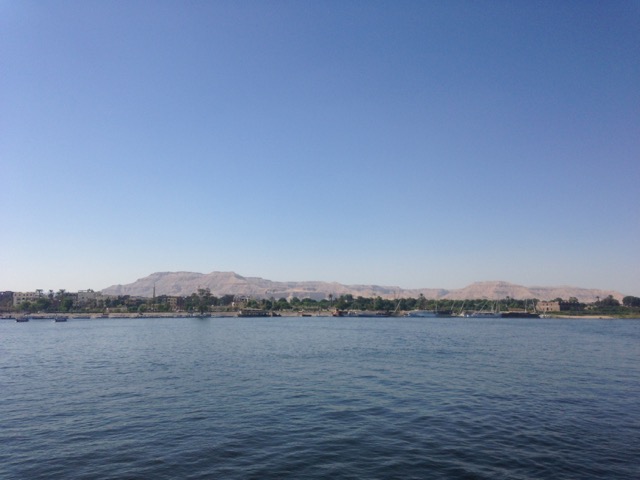
We called Mohammed, our driver from our first day in the Theban Necropolis, and arranged for him to drive us to Deir el-Bahri, the Valley of the Kings, and the Tombs of the Nobles.
Our first stop was Deir el-Bahri,1 Hatshepsut’s mortuary temple. Set in a natural amphitheater, it has, by far, the most dramatic setting of any temple in the Theban Necropolis.
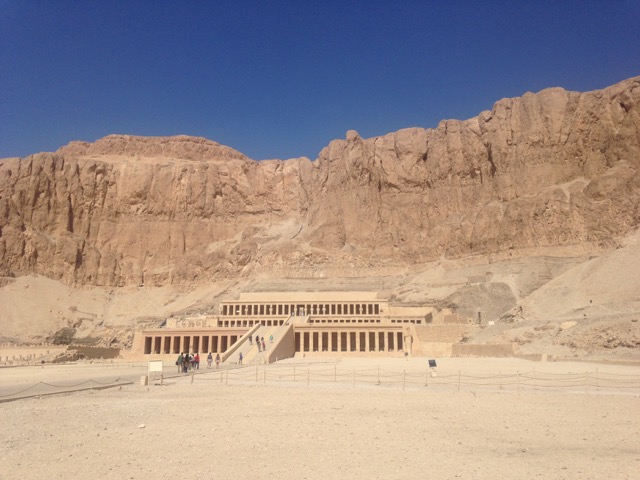
The long walk from the parking lot gives you plenty of time to appreciate the stunning location.2
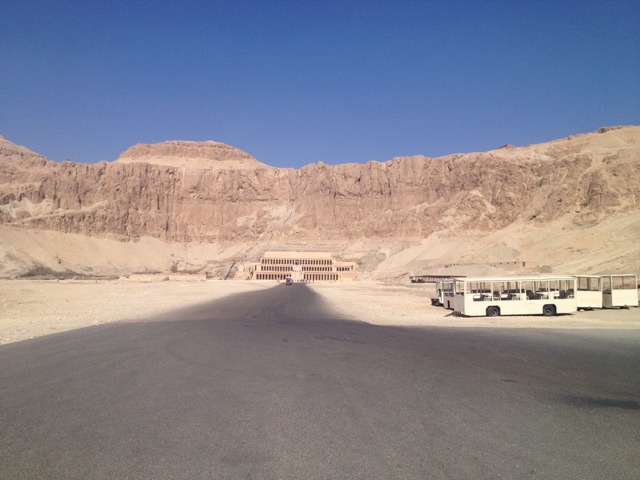
Unlike many of the other temples in the Theban Necropolis, Deir el-Bahri was not constructed on the floodplain. Accordingly, it was never covered with sand and silt, and has remained a feature of the Theban landscape since ancient times.
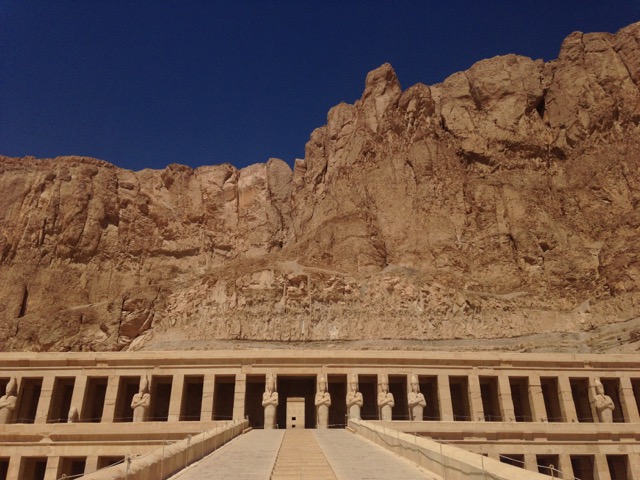
The lower levels of the temple are a series of small sanctuaries, gardens, and colonnades, lined with carvings and paintings.
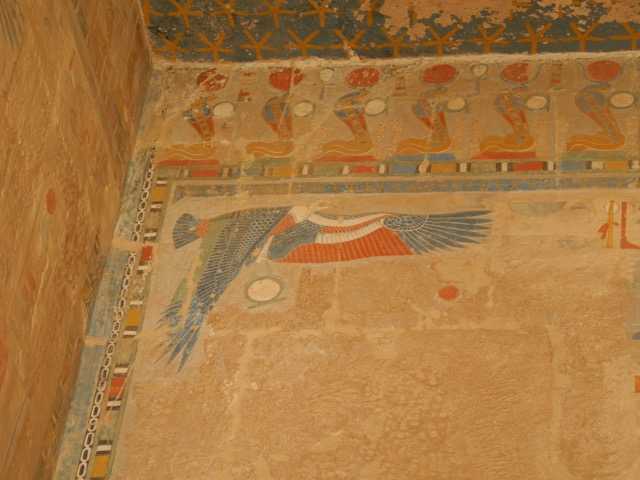
The upper terrace was lined with giant statues of Osiris (the god of the afterlife), of which eight remain.
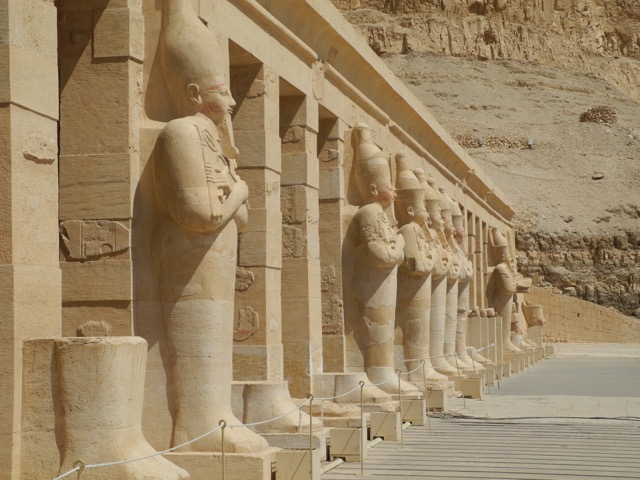
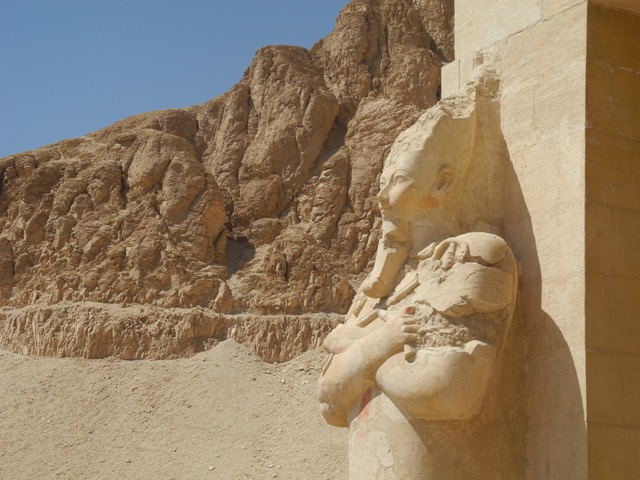
The interior of the temple on the uppermost level is rather stark and plain, but you can peek into a sanctuary dug into the cliffs (although you can’t get very close).
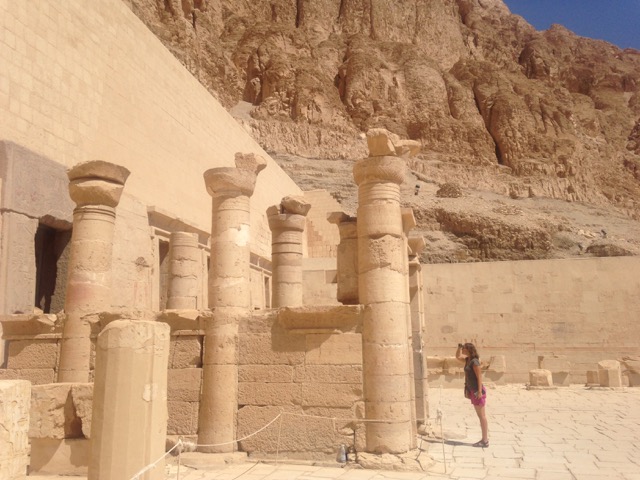
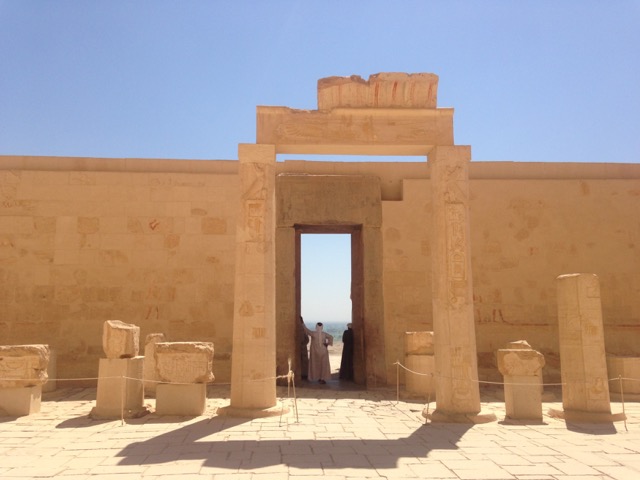
After we left Deir el-Bahri, we headed for the Valley of the Kings, the final resting place of many of the major royal figures of the New Kingdom (16th-11th centuries BC). There are more than 60 known tombs in the area, but only 10 are accessible to visitors at any given time.3 A single ticket allows you to visit any three of the open tombs, but special tickets are required to visit the two most popular tombs, those of Tutankhamun (popular for obvious reasons) and Rameses VI (a tourist attraction since antiquity).
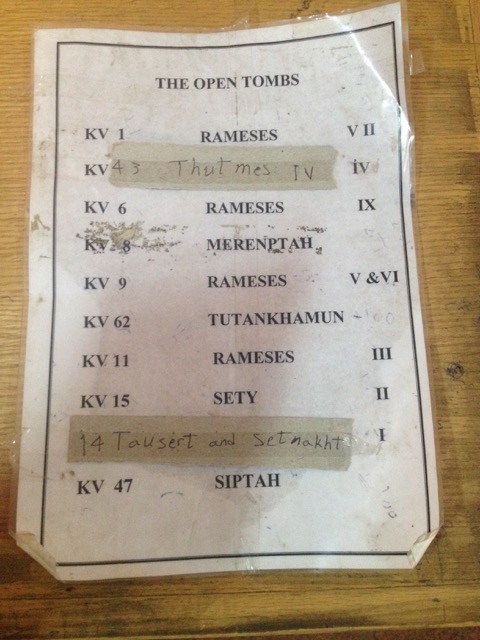
We decided to visit the tombs of Tausert & Setnakht (KV14), Rameses III (KV11), and Merenptah (KV8).
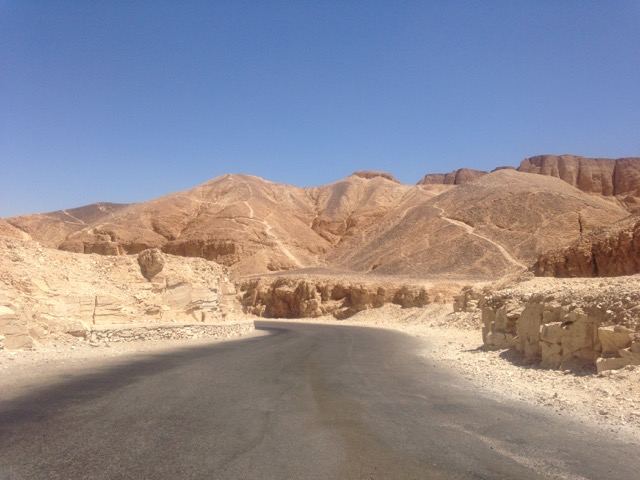
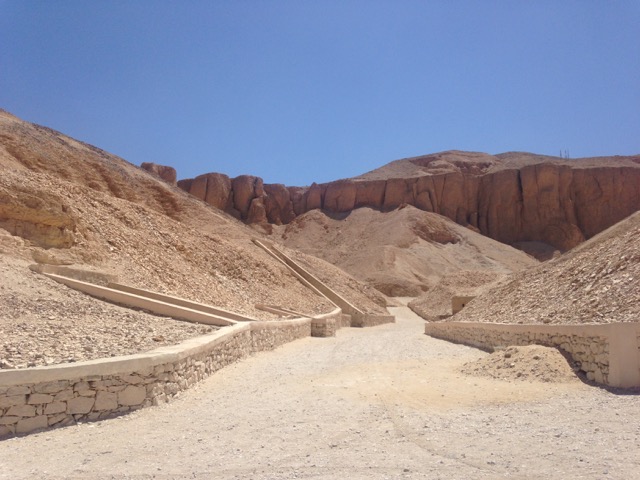
KV14 is unusual for having two burial chambers. It originally held the mummy of Queen Tausert, the wife of Seti. It was later usurpted by Setnakht when his tomb ran into difficulties (see below).
Our guidebook told us that KV11, the tomb of Rameses III, was “the grandest of the Ramessid tombs.” One of the interesting features of the tomb is where the diggers accidentally broke through into another tomb. When this happened, Setnakht, the pharoah who had commissioned the tomb, abandoned its construction and appropriated Tausert’s tomb instead. Rameses III later came along and began construction on the partially constructed tomb, changing the axis and making it his own.
KV8 is one of the longer tombs, having a series of steps that descend through several chambers.
I wish I had some pictures to share, but photography is not permitted inside the tombs. This is understandable – the paintings are delicate and can be damaged by flash photography. This is not the only threat to the paintings, of course: decades (and in the case of certain tombs, centuries) of visitors traveling through the tombs have brought their hands and their moisture (our guidebook reports that the average visitor leaves behind 2.8 grams of sweat). In fact, the long-term goal of the Egyptian Supreme Council of Antiquities is to create life-size replicas of all the tombs so that the originals can be completely preserved.
Finally, we visited the Tombs of the Nobles.
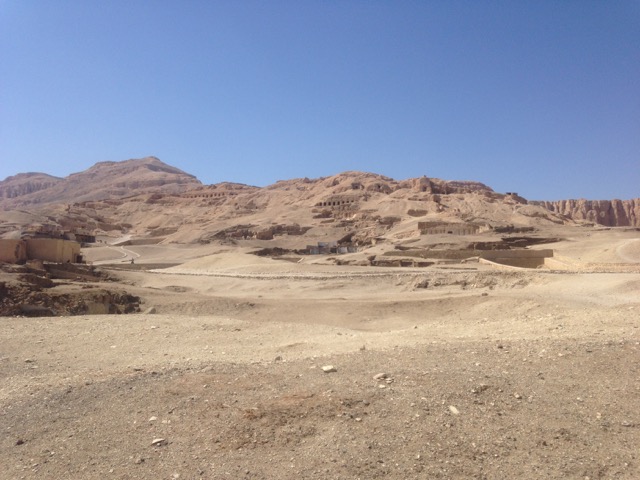
Tickets to the tombs are sold in clusters, and we chose to visit the tombs of Menna and Nakht. These are really interesting because the interior murals depict daily life, rather than pharaonic funerary rites.
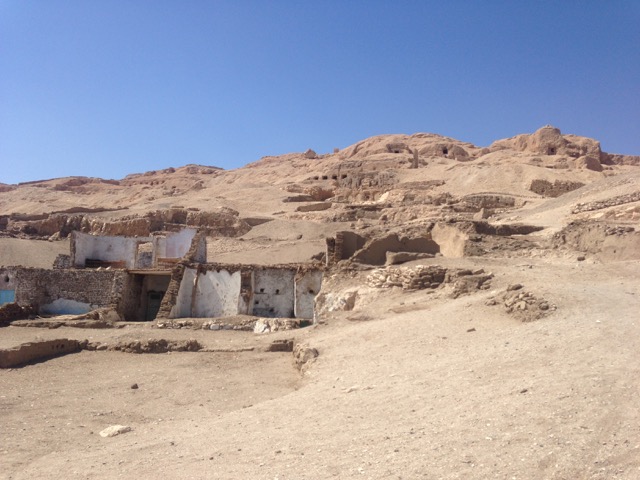
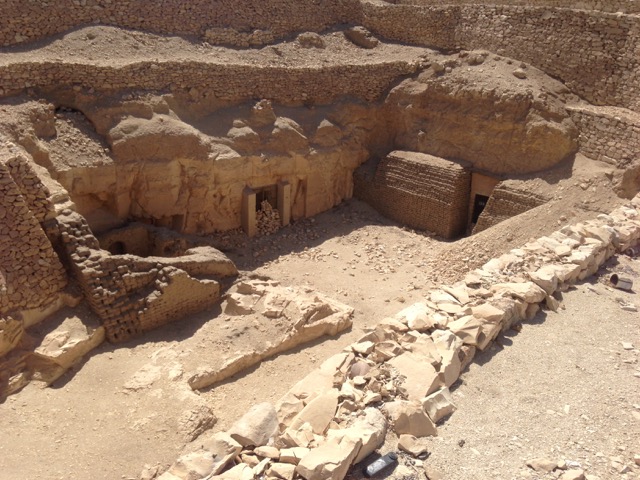
After fending off a few hundred offers for felucca rides, we made our way back to Luxor.
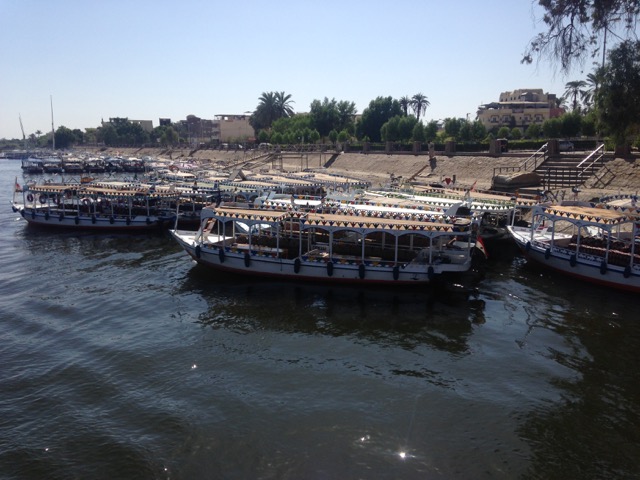
Hot and dusty from our long (amazing) day of sightseeing, we then spent the rest of the day at the pool.

1 Arabic for “the Northern Monastery.”
2 You can purchase a shuttle ride from the parking lot to the temple, which may be helpful if you are traveling with the very old or the very young, or just trying to preserve your stamina on a long, hot, jam-packed day of sightseeing.

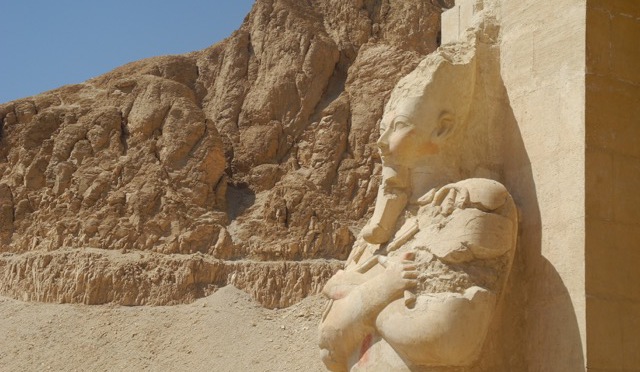

Thanks a lot for such an interesting post about Luxor and useful recommendations. I will travel to Egypt after a few days and found them indispensable !
cheers,
Nurlan